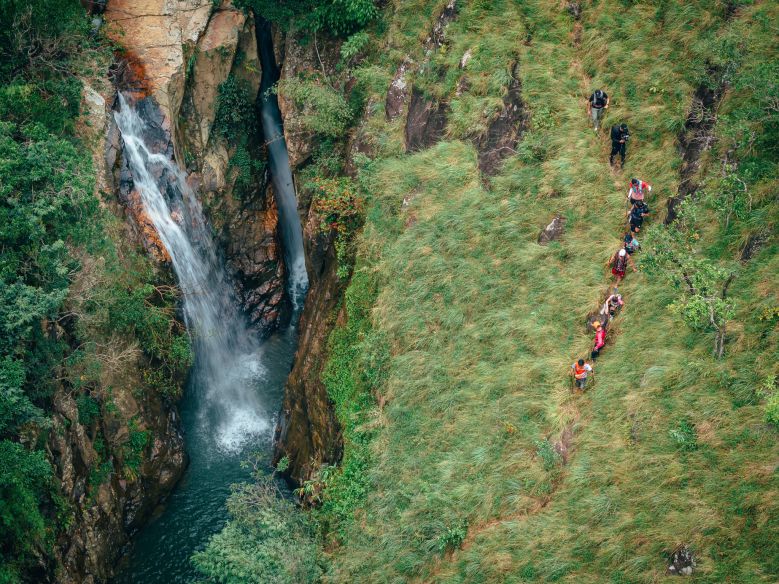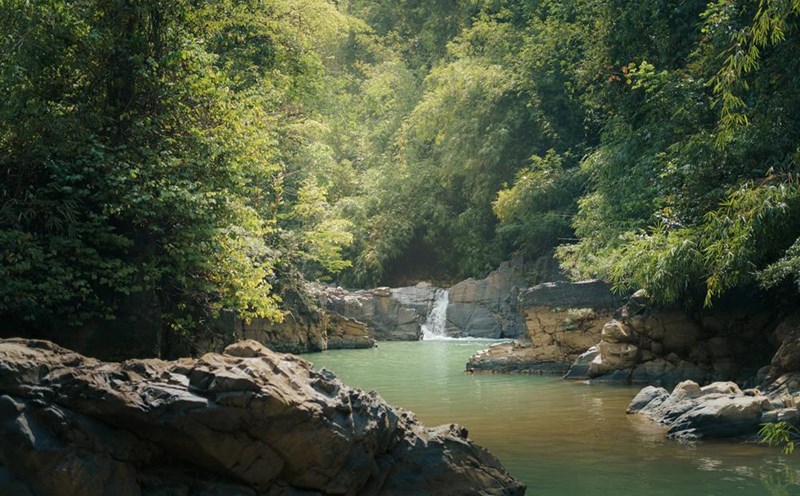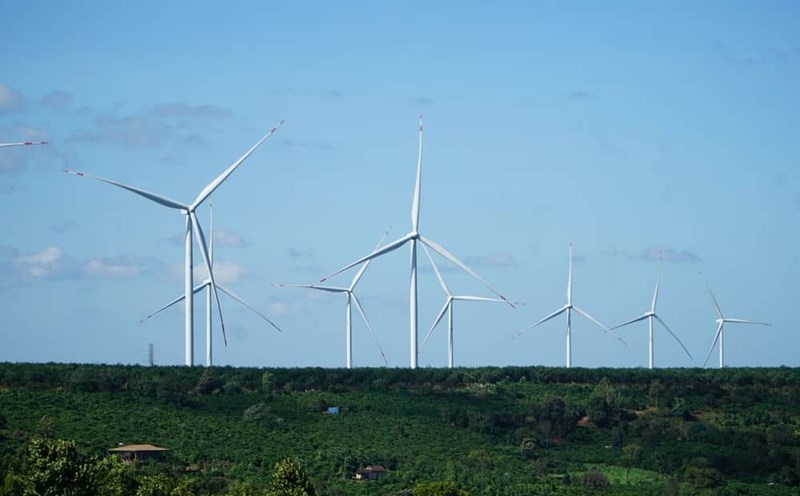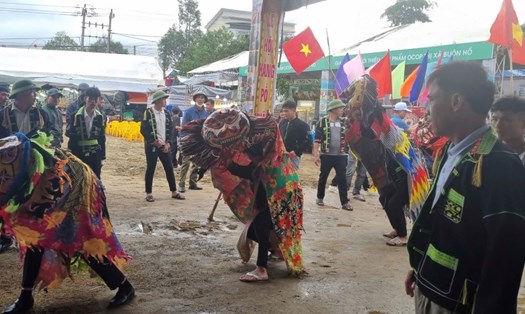Now, this trade route has become an attractive and challenging trekking route for those who love adventure.
The civilized history of humanity has been formed on trade routes such as the tea route, the silk road, and the spice journey. The Central Highlands people also have their own path, the path of salt, because for them, salt is more valuable than gold and silver.
For thousands of years, men of the Co Ho, Cil, Bahnar, J'rai, stieng ethnic groups... in the Central Highlands have carried valuable forest products such as animal skin, elephant elephants... to the coastal areas of Ninh Thuan to exchange for salt grains. They have to go through the sacred forest of toxic water filled with fierce animals, parasites and bandits every week to get salt grains to bring back to the village to trade.
There are many salt roads connecting the Central Highlands with the plains, creating a dense branch road system across the Truong Son range. However, the most famous salt road is the road connecting the two national parks of Bidoup - Nui Ba (Lam Dong) and Phuoc Binh (Ninh Thuan) about 30km long.
This is also the most popular trekking route for adventurous travelers to explore because it passes through a diverse range of terrain such as sungury forests, magical moss forests such as fairy tales, often green closed forests full of mystery, colorful broad-leaf mixed forests, pine forests, micro-beam forests and vast, eye-catching grasslands.
Do not only prepare yourself to enjoy splendid beauty but also endure many hardships and challenges. This journey requires participants to have passion, health and especially independence as well as team spirit when participating in the experience.
There are slopes that are inclined at 20 degrees, as slippery as fat, not mud or rattan water, but because the pine leaves fall and cover the ground thickly, creating slides that promise to be very moist if you take subjective steps. Decreasing, the handcuffs are constantly changing direction, if you look at Google Map, it will probably create the image of a set of intestines.
The latter must stick to the previous person, placing the right footprint to avoid the danger and the risk of falling. Step each step gradually follow the slope. The road is slippery, almost inching every step, the plants are moving forward. Hearing the sound, but the stretched out of the grass rushed out to find a way to snuggle through the fabric to suck blood.

But the compensation for those who dare to step on that path is wonderful. They are compensated with the beauty that reaches the heart of the mountains and forests with waterfalls that release white foam like the hair of Ma Co fairy in Ly Bach's poem that moves a corner of the old forest
It is also difficult to describe the emotions of those passing through the ancient roots that are thousands of years old. What is this place 1,000 years ago, what is it after us 1,000 years later? A millennium has passed, leaving behind lines of the star fruit on the trunks of goosebumps and po mu. Now that is a witness to a modern person passing by.
Standing at the base of po mu for 1,300 years with straight body, leaning straight up to the blue sky, surrounded by strange and sufficient ropes, making people, no matter how proud or complacent, feel small in nature, in the midst of a thousand years like a grain of sand from the beginning of the world.
There were times when the compensation for the salt road was very simple. It is a clear, cool, sweet stream that gently soothes the body of the city, which is burning with many cuts and swelling. It was a night sky filled with stars forming a crystal arch covering the campsite.
Or simply just a dreamy morning, when the sun is gentle and high, sending a ray of sunlight to paint the sea of white clouds pink, turning them into soft, graceful, luxurious silk seas, flying up the green trees, flying into the eye of a human being.
Second is the Ta Nang - Phan Dung Salt Road, another famous trekking route alongside the Bidoup - Nui Ba - Phuoc Binh route. This is the main salt road of the J'rai and Bahnar people, going down to the sea of Binh Thuan.
The Ta Nang - Phan Dung route starts from Ta Nang commune, Duc Trong district, Lam Dong and ends in Phan Dung commune, Tuy Phong district, Binh Thuan, with a length of about 50km. It is considered the most beautiful trekking route in Vietnam.
On this route, adventurers will cross streams, climb mountain passes, cross green forests and go through many types of terrain and habitats such as beautiful rice fields such as the paintings of the Churu people, coffee hills, pine forests, grass hills, mixed forests, wild flower fields, savings fields or red hills.
The elevated transformation of the route is also a challenging attraction. Conquering the Ta Nang - Phan Dung peak at 1,160m high to stand on a "rooftop" to fully admire the majestic scenery of the Southern Central Highlands mountains and forests is an unacceptable challenge.
Another gem of this route is the legendary Yavly waterfall that poured straight from the clouds into a lake of blue autumn winds. Sitting quietly in a space filled with small, fresh grains of water, I suddenly felt like I had become an little prince adventuring among the balls.
Continuing to cross the streams flowing through the mixed forest will reach a clear, vast plateau. Lying on a green grass field, holding a trunk of stevia, suddenly thinking about the ancient travel groups who were also dumping goods and lying down here to watch this sky, enjoying the feeling of about to end a tiring but satisfying journey because of the goal to be achieved.
Salt roads are not only a journey to exchange goods between the uplands and the plains. It is a journey that witnesses the change of climate, geography, culture and the soul of people. This path not only follows our ancestors, but it also helps us discover ourselves.










